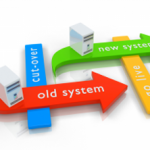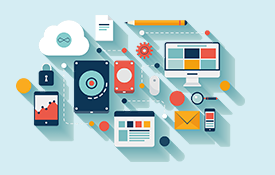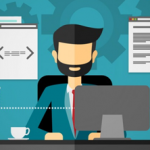Source: From I.M.Testy (BJ Rollison’s blog)
I just finished reading Implementing Automated Software Testing by E.Dustin, T. Garrett, and B. Gauf and overall this is a good read providing some well thought out arguments for beginning an automation project, and provides strategic perspectives to manage a test automation project. The first chapter made several excellent points such as:
- Automated software testing “is software development.”
- Automated software testing “and manual testing are intertwined and complement each other.”
- And, “The overall objective of AST (automated software testing) is to design, develop, and deliver an automated test and retest capability that increases testing efficiencies.”
Of course, I was also pleased to read the section on test data generation since I design and develop test data generation tools as a hobby. The authors correctly note that random test data increases flexibility, improve functional testing, and reduce limited in scope and error prone manually produced test data.
There is also a chapter on presenting the business case for an automation project by calculating a return on investment (ROI) measure via various worksheets. I have 2 essential problems with ROI calculations within the context of test automation. First, if the business manager doesn’t understand the value of automation within a complex software project (especially one which will have multiple iterations) they should read a book on managing software development projects. I really think most managers understand that test automation would benefit their business (in most cases). I suspect many managers have experienced less than successful automation projects but don’t understand how to establish a more successful automation effort. I also suspect really bright business managers are not overly impressed with magic beans.
Magic beans pimped by a zealous huckster are the second essential problem with automation ROI calculations. Let’s be honest, the numbers produced by these worksheets or other automation ROI calculators are simply magic beans. Now, why do I make this statement? Because the numbers that are plugged into the calculators or worksheets are ROMA data. I mean really, how many of us can realistically predict the number of atomic tests for any complex project? Also, do all tests take the same amount of time, or will all tests be executed the same number of iterations? Does it take the same amount of time to develop all automated tests, and how does one go about predicting a realistic time for all automated tests to run? And of course, how many of those tests will be automated? (Actually, that answer is easy….the number of automated tests should be 100% of the tests that should be automated.)
Personally, I think test managers should not waste their time trying to convince their business manager of the value of a test automation project; especially with magic beans produced from ROMA data. Instead test managers should start helping their team members think about ROI at the test level itself. In other words, teach your team how to make smart decisions about what tests to automate and what tests should not be automated because they can be more effectively tested via other approaches.
In my next post I will outline some factors that testers, and test managers can use to help decide which tests you might consider automating. Basically, the bottom line here is that an automated test should provide significant value to the tester and the organization, and should help free up the testers time in order to increase the breadth and/or scope of testing.



















